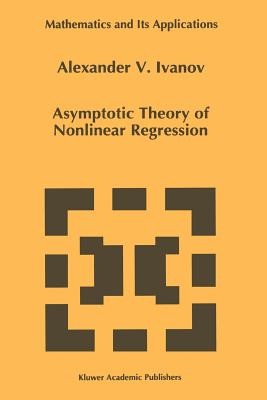
- We will send in 10–14 business days.
- Author: A A Ivanov
- Publisher: Springer
- Year: 2010
- Pages: 330
- ISBN-10: 9048147751
- ISBN-13: 9789048147755
- Format: 15.6 x 23.4 x 1.8 cm, softcover
- Language: English
- SAVE -10% with code: EXTRA
Reviews
Description
Let us assume that an observation Xi is a random variable (r.v.) with values in 1 1 (1R1, 8 ) and distribution Pi (1R1 is the real line, and 8 is the cr-algebra of its Borel subsets). Let us also assume that the unknown distribution Pi belongs to a 1 certain parametric family {Pi(), () E e}. We call the triple £i = {1R1, 8, Pi(), () E e} a statistical experiment generated by the observation Xi. n We shall say that a statistical experiment £n = {lRn, 8, P;, () E e} is the product of the statistical experiments £i, i = 1, ..., n if PO' = P () X ... X P () (IRn 1 n n is the n-dimensional Euclidean space, and 8 is the cr-algebra of its Borel subsets). In this manner the experiment £n is generated by n independent observations X = (X1, ..., Xn). In this book we study the statistical experiments £n generated by observations of the form j = 1, ..., n. (0.1) Xj = g(j, (}) + cj, c c In (0.1) g(j, (}) is a non-random function defined on e, where e is the closure in IRq of the open set e IRq, and C j are independent r. v .-s with common distribution function (dJ.) P not depending on ().
EXTRA 10 % discount with code: EXTRA
The promotion ends in 16d.15:28:06
The discount code is valid when purchasing from 10 €. Discounts do not stack.
- Author: A A Ivanov
- Publisher: Springer
- Year: 2010
- Pages: 330
- ISBN-10: 9048147751
- ISBN-13: 9789048147755
- Format: 15.6 x 23.4 x 1.8 cm, softcover
- Language: English English
Let us assume that an observation Xi is a random variable (r.v.) with values in 1 1 (1R1, 8 ) and distribution Pi (1R1 is the real line, and 8 is the cr-algebra of its Borel subsets). Let us also assume that the unknown distribution Pi belongs to a 1 certain parametric family {Pi(), () E e}. We call the triple £i = {1R1, 8, Pi(), () E e} a statistical experiment generated by the observation Xi. n We shall say that a statistical experiment £n = {lRn, 8, P;, () E e} is the product of the statistical experiments £i, i = 1, ..., n if PO' = P () X ... X P () (IRn 1 n n is the n-dimensional Euclidean space, and 8 is the cr-algebra of its Borel subsets). In this manner the experiment £n is generated by n independent observations X = (X1, ..., Xn). In this book we study the statistical experiments £n generated by observations of the form j = 1, ..., n. (0.1) Xj = g(j, (}) + cj, c c In (0.1) g(j, (}) is a non-random function defined on e, where e is the closure in IRq of the open set e IRq, and C j are independent r. v .-s with common distribution function (dJ.) P not depending on ().


Reviews